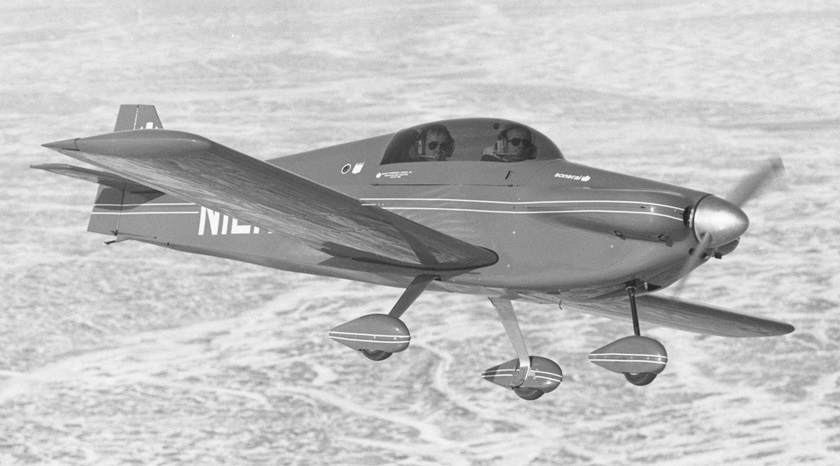Sonex announces return of Sonerai
Plans-built airplane started it all in 1971
John Monnett's original plans-built racing airplane is back in stock at Sonex Aircraft in Oshkosh, Wisconsin. Plans for the Sonerai will set you back just $145; add another $21,000, give or take, for parts and materials, along with some sweat equity, and you could wind up flying an airplane for sports car money, and towing it home to your garage.
Sonex announced July 10 that Monnett and Sonex Aircraft have resumed selling plans and supporting builders of the Sonerai aircraft, looking to expand on a fleet of thousands built in the aircraft’s nearly half-century history.
Sonerai I, the original, single-seat, mid-wing taildragger was built to race around two-mile ovals marked by pylons at speeds exceeding 170 mph. It first flew in 1971 and went on to win Formula V championships. It also led to the creation of Sonex Aircraft, thanks to popular demand for Monnett’s speedy, economical design. Popular demand drove further innovation, and the Sonerai was reconfigured with two seats to become the Sonerai II in 1973, followed by a low-wing variant, the Sonerai IIL, and a tricycle-gear Sonerai IILT. A stretched Soneria IILTS was introduced in 1984.
The economy of the Sonerai extended beyond the modest operating costs. The wings fold flat to the fuselage, a process that one person can complete, and the aircraft can be towed by the tailwheel over short distances, or trailered for longer road trips. With its wings tucked, there is room for a Sonerai in most garages; more than one would fit in a typical aircraft hangar.
A plans-built airplane is just what it sounds like: Parts fabrication is required, though “any Sonerai model can be built by an experienced builder in 800 to 1000 hours. Your build time will vary depending on your past experience and skill level,” the company notes on its website. The estimated cost, including engine and instruments of the buyer’s choice, starts at $21,340 with a 1,600-1,700cc Volkswagen engine conversion, or $22,940 for those who opt for an 80-horsepower AeroVee. The company offers a range of instrument upgrades beyond the $2,000 basic instrument included in the project cost estimates posted online.
The original hand-drawn plans dating to the 1970s and 1980s include the plans set, materials list, and detail component drawings, as well as the flight manual, builder’s manual, and wing construction manual written by Fred Keip. The document package will set you back $145.





